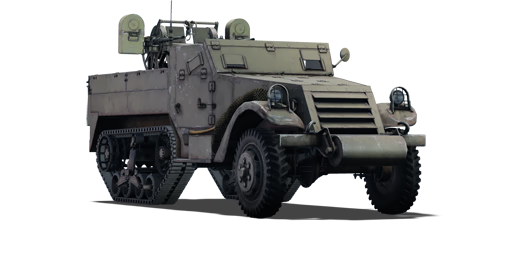



The M13 Multiple Gun Motor Carriage (MGMC) is the first variant of the M3 half-track-based self-propelled anti-aircraft gun family. The White Motor Company produced it between July 1942 and May 1943 in response to a requirement for a mobile anti-aircraft vehicle. It evolved from a series of unsuccessful prototypes tested between 1940 and 1942. It was only used in combat once, when the U.S. Army landed at Anzio in January 1944, before being replaced by the more heavily armed M16 Multiple Gun Motor Carriage (MGMC) in April 1944.
Introduced in Update 1.45 "Steel Generals", the M13 MGMC is a lightly armoured vehicle. The armour on the M13 MGMC is very thin, and the lack of sloping makes it an easy target. As a result, rely on its exceptional maneuverability, handling, and speed to stay in cover at all times. Although the main armament can penetrate some light tanks, engaging them as the primary objective is not recommended. When confronted with an artillery barrage, always reposition, as the fragments can easily destroy this vehicle.
| Belt | Belt filling | Armor penetration (mm) at a distance: | |||||
|---|---|---|---|---|---|---|---|
| 10 m | 100 m | 500 m | 1000 m | 1500 m | 2000 m | ||
| API-T/I/AP/API-T | 31 | 29 | 21 | 14 | 9 | 6 | |
| API-T/AP-I/API-T | 30 | 27 | 19 | 12 | 8 | 5 | |
| AP/AP/API-T | 31 | 29 | 21 | 14 | 9 | 6 | |
| API-T | 29 | 27 | 19 | 12 | 7 | 5 | |












Mobility | |
|---|---|
Protection |
|---|
Firepower | |
|---|---|